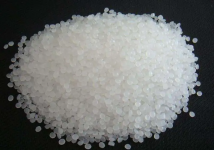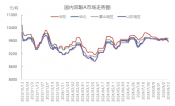read: 515 time:2025-05-22 03:56:56 from:化易天下
Nonsteroidal anti-inflammatory drugs (NSAIDs) are a widely used class of medications known for their ability to reduce inflammation, alleviate pain, and lower fevers. Within the broad category of NSAIDs, there are various subclasses based on their chemical structures. Among these subclasses is the propionic acid derivative group, a significant category due to its specific pharmacological properties. This article will delve into the question, "Which of the following NSAIDs is a propionic acid derivative?" by exploring the characteristics and examples of propionic acid derivatives within NSAIDs.
Propionic acid derivatives are a subclass of NSAIDs that have a specific chemical structure involving the propionic acid moiety. This structure imparts unique pharmacokinetic and pharmacodynamic properties, making these drugs effective in treating a variety of inflammatory conditions. One of the key features of propionic acid derivatives is their ability to inhibit the cyclooxygenase (COX) enzymes, particularly COX-1 and COX-2, which play a pivotal role in the synthesis of prostaglandins. Prostaglandins are lipid compounds that contribute to inflammation, pain, and fever, so by inhibiting their production, propionic acid derivatives effectively reduce these symptoms.
To answer the question, "Which of the following NSAIDs is a propionic acid derivative?" it is essential to identify some common examples of drugs within this category. The most widely recognized propionic acid derivatives include:
Ibuprofen: Perhaps the most well-known propionic acid derivative, ibuprofen is frequently used for pain relief, inflammation reduction, and fever control. It is available over the counter and is a popular choice for treating conditions such as arthritis, menstrual cramps, and general pain.
Naproxen: Another common propionic acid derivative, naproxen is often used for similar purposes as ibuprofen but has a longer half-life, meaning it can provide relief for extended periods. Naproxen is particularly effective for managing chronic conditions like osteoarthritis and rheumatoid arthritis.
Ketoprofen: While less commonly known than ibuprofen and naproxen, ketoprofen is another propionic acid derivative with potent anti-inflammatory and analgesic properties. It is often used in cases of acute pain and inflammation, such as those associated with injuries or surgical procedures.
These examples highlight the versatility and effectiveness of propionic acid derivatives within the NSAID category, making them a vital part of many therapeutic regimens.
The question "Which of the following NSAIDs is a propionic acid derivative?" also prompts a consideration of why these drugs are chosen over others. One of the main advantages of propionic acid derivatives is their favorable safety profile compared to some other NSAIDs. They tend to cause fewer gastrointestinal side effects, such as ulcers and bleeding, especially when used at recommended doses. This is because propionic acid derivatives generally have a balanced effect on COX-1 and COX-2 enzymes, reducing the risk of damaging the stomach lining while still providing effective pain and inflammation relief.
Additionally, propionic acid derivatives are known for their relatively rapid onset of action, making them ideal for managing acute pain conditions. Their pharmacokinetics also allow for flexible dosing regimens, which can be tailored to the needs of individual patients, whether for short-term pain relief or long-term management of chronic inflammatory diseases.
In summary, when posed with the question, "Which of the following NSAIDs is a propionic acid derivative?" it is clear that drugs like ibuprofen, naproxen, and ketoprofen fall into this category. These medications are widely used for their effectiveness in managing pain, inflammation, and fever with a relatively favorable safety profile. Understanding the specific subclass of NSAIDs, such as propionic acid derivatives, helps healthcare professionals and patients alike make informed decisions about the most appropriate treatment options for various conditions.

Jincheng Petrochemical's 300000 ton polypropylene plant successfully trial production, 2024 polypropylene market analysis

The ABS market remains sluggish, what is the future direction?

Market differentiation of bisphenol A intensifies: prices rise in East China, while prices generally decline in other regions

The production method and process flow of silicone acrylic lotion, and what are the common raw materials